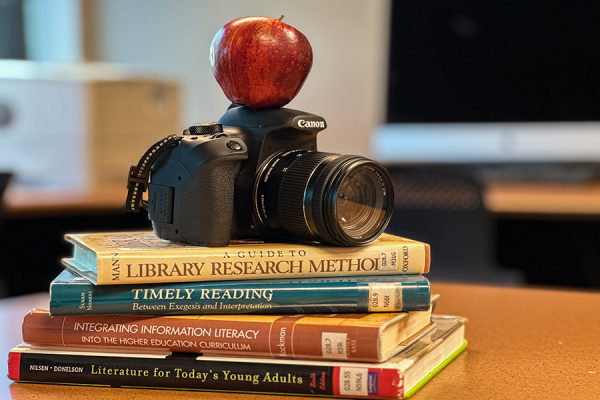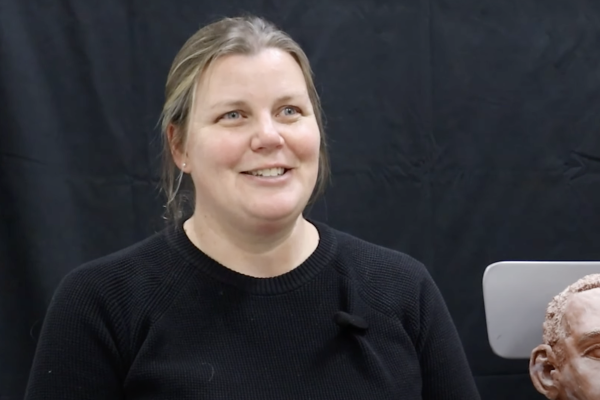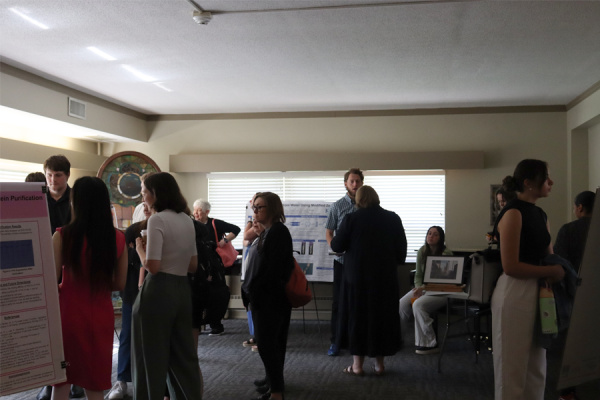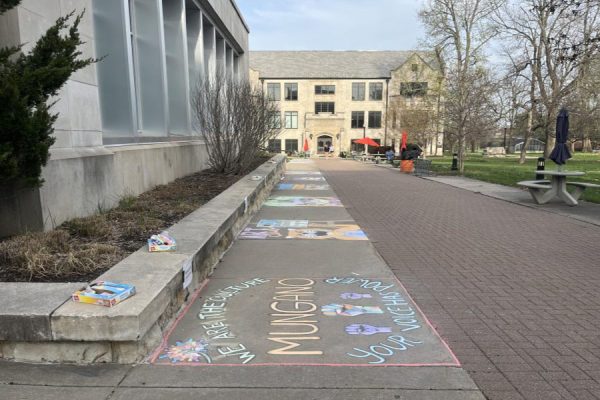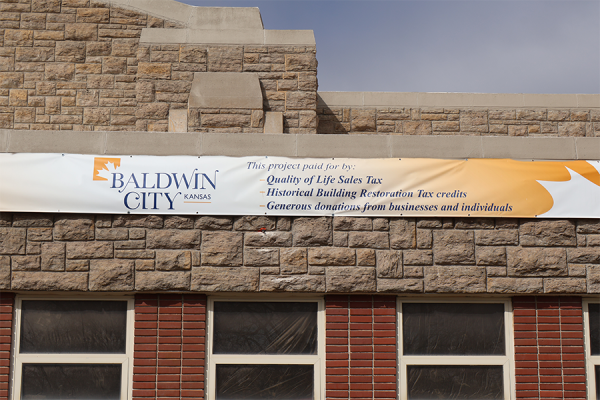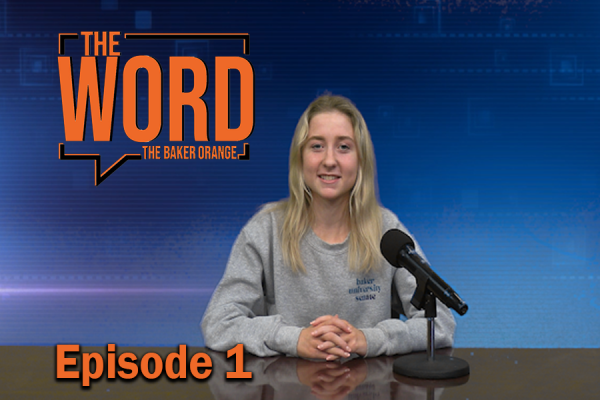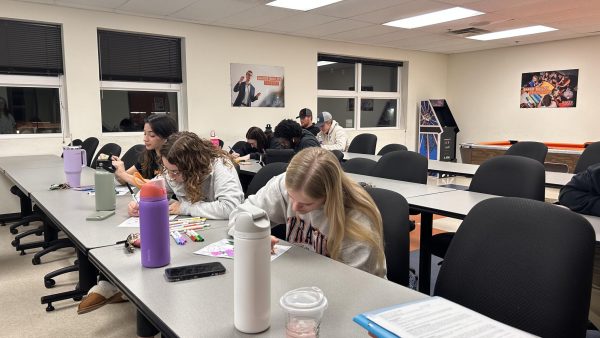BU now using Turnitin plagiarism detection software
Beginning this fall, Baker University has renewed its subscription to Turnitin, a controversial plagiarism detection software, to aid faculty and students in the discovery and prevention of plagiarism on campus.
About Turnitin
The Turnitin website markets the product as “technology to improve student writing” that was created in the late 1990s. Turnitin’s Feedback Studio says it has amassed a collection of more than 600 million student papers.
Approximately five years ago, Baker University used a licensed plagiarism-detection software, but because of budget concerns, discontinued the service. Since then, faculty members have voiced their desire to have an equitable and consistent tool for finding and assessing incidents of student plagiarism.
Despite Turnitin’s success in college spheres over the years, the software has received mixed reviews. There have been some law cases, like Vanderhye v. iParadigms LLC, featuring students who have refused to submit their papers to the program – all submitted papers are saved to an external database to which another party could have access – on the grounds Turnitin is violating their copyright and privacy rights. Both a district and an appeals courts affirmed Turnitinwas in the right under fair use – using the papers in a new and innovative way. Fearing the potential for future lawsuits, though, some colleges have either banned the entire service or have incorporated a policy exempting students from being required to submit work if they choose not to.
Students have also posted on various forums – such as YouTube comment sections and Reddit feeds – saying that they have failed an assignment, or been asked to rewrite work, due to a large percentage of their paper being flagged as plagiarism, when they say they did not plagiarize and that it was due to professor and/or software error. Some students’ posts suggest that the professor-errors are a result of a lack of knowledge of how the software works, and the system-errors stem from a computer not understanding the circumstances or context in which the flagged portions are set.
When a paper is submitted, the Turnitin software flags any instance of possible plagiarism, including quotes, the bibliography source, required/standard subject heading, article names and amount of similarity to other papers. It then calculates a percentage of the submitted work that is plagiarized or similar to other works.
A blog post published by Turnitin on its website stated its response to such student claims:
“There is a very distinct difference between what Turnitin flags as matching text (aka: similarity index) and plagiarism. Turnitin will highlight any matching material in a paper – even if it is properly quoted and cited. Just because it appears as unoriginal does not mean it is plagiarized; it just means that the material matches something in the Turnitin databases.
We leave it to the instructors to look at a paper and the originality report to make the determination of whether or not something is plagiarism, and to what extent – intentional plagiarism, unintentional plagiarism, improper/lack of citation or mere coincidence. Best practices from instructors suggest that Turnitin OriginalityCheck be used as a teaching tool to address citation and academic honesty, not only as a punitive tool .”
Spurred by this controversy, Susan Schorn, a writing flag coordinator at the University of Texas in Austin, was inspired to conduct a study about the effectiveness of both Turnitin and UT’s plagiarism detection software of choice, SafeAssign, in discovering plagiarism. She started her study in 2007 and conducted a follow-up in 2015. Schorn’s experiment began with a sample of test essays with 23 commonly-cited sources among humanities courses, including various levels of plagiarism. During her study, Schorn concluded that Google searches surpassed both systems in the amount of copied material detected and simplicity of use. Although, both systems could outperform Google in collusion, or similarity, of papers, for the 23 plagiarized sources in the papers – which were strategically placed there by Schorn and her colleagues based on common methods they saw in students’ papers – Google, again, surpassed both systems in the amount of correctly-found plagiarism with 91.3 percent. Turnitin and SafeAssign found 60.76 and 43.4 percent, respectively.
Schorn’s data suggests that while Turnitin is more effective than competing software, it is not as effective as manual Google searches.
The overall effectiveness and usefulness of Turnitin as a plagiarism detection software may be up to colleges, faculty and students to determine themselves.
Turnitin at Baker
How this software will affect Baker University has yet to be seen, considering it is the start of the year and Faculty Senate is currently in the process of amending Baker’s academic misconduct and plagiarism policies to include more strict measures of dealing with dishonesty.
Mass Media and Visual Arts Department Chair Joe Watson said that Baker is not requiring faculty and students to use Turnitin, but faculty members do have it available as a tool to detect and prevent plagiarism.
“There is no policy that says Baker faculty have to use this software,” Watson said. “I am sure there are going to be some of my colleagues that don’t want to use it, and if they don’t want to, they don’t have to.”
Watson says that he is passionate about plagiarism, and he will spend a lot of time trying to find it if he suspects it in a student paper. He knows that Turnitin is not perfect, but he sees it as a valuable teaching tool for students to learn how to avoid plagiarizing.
“Frankly, I plan to use [Turnitin] as a tool,” he said. “One of the things I want to do is have students turn in drafts, so that if there is something that raises a flag, they have the opportunity to change it. I find no pleasure in finding plagiarism. Telling a student that I found plagiarism in one of their papers is one of the most painful things I do as a professor … If there is a tool that I can use in one of my classes that students could use to submit a draft and catch something like, ‘Oh, my gosh! I forgot to cite that! Or ‘I forgot a quotation mark!’ – things like that do happen – and students can avoid it and clean it up before they turn in a final version, I am all for that.”
Acknowledging the issues of professors not understanding the program fully, Watson said that the Baker faculty has set up training sessions where faculty learn how to use the software correctly. Watson knows that a computer-generated software like Turnitin still needs a human element to be most effectively used.
“I think with any software system, nothing is ever going to be perfect. It is important how you use it,” he said. “If the computer software messes up, I am not going to hold [students] accountable for that. I think that, like with anything, you have to learn how to use it and not abuse it … You have to include a human element, not just take the report and use it verbatim. It will produce a report but you have to use your own common sense to read the report and apply it as you see fit.”
Watson said he is looking forward to implementing the Turnitin software in his classes in the coming weeks as both a teaching tool and a way to lift the burden of his plagiarism hunting.
“Something I am excited about is that this takes the burden off me as a professor. I can submit it, wait for the report to come back, read the paper, look at the report and make a judgment. I am sure there are things that might be better, but it’s all in how you use it.”
Agreeing with Watson, senior English literature major Kristen Robbs thinks that Turnitin could be a good source for helping students understand plagiarism.
“I also know that sometimes plagiarism can be hard to understand. Especially working as a writing tutor, I can see how hard it can be to understand how to take someone else’s ideas and use them to support your own without taking credit for their work,” Robbs said. “I think this software is a good start to physically demonstrating what plagiarism is and opening students’ eyes to ways they may be plagiarizing and not realize it. For underclassmen in particular, it could really up the learning curve on knowing how to write a research paper with your personal opinion as well as the opinions of others.”
Robbs is familiar with software like this and thinks it is a helpful tool for both students and faculty. Her father was a teacher and used this software to check his students’ work.
“My dad has used this program before as a teacher, and it was helpful for him to be able to double-check on papers that seemed off,” Robbs said. “Sometimes it would frustrate him to see how students would try to get away with blatant plagiarism. “I think it’s a nice tool to have at the school’s disposal, both for professors and students, and will help identify and improve on plagiarism problems, but it must be used wisely and, especially initially, with a dose of grace; otherwise, it could turn into a case of guilty until proven innocent.”




